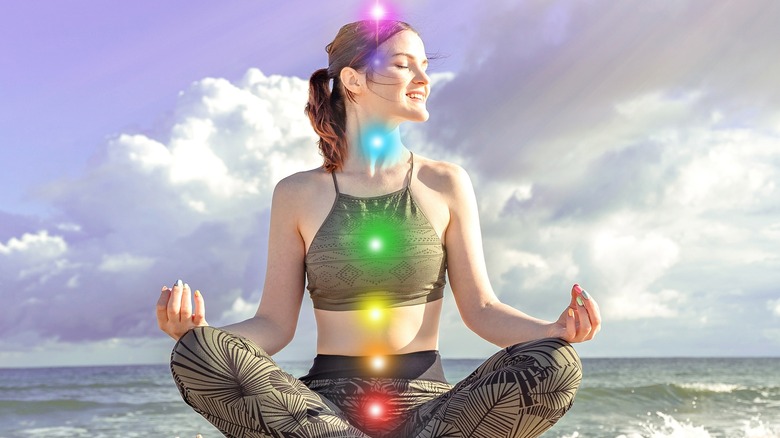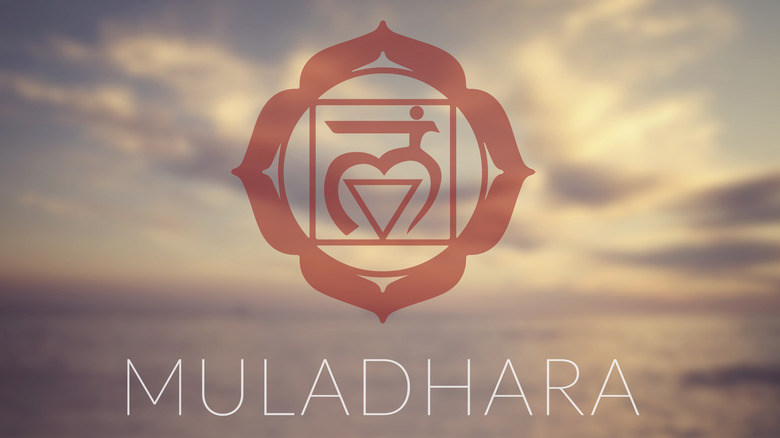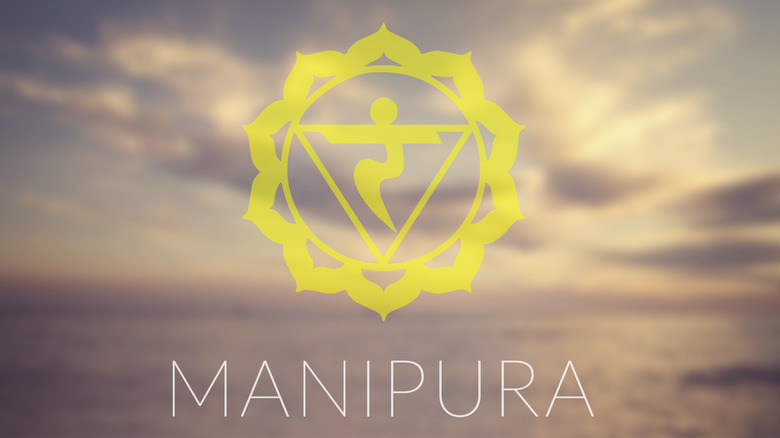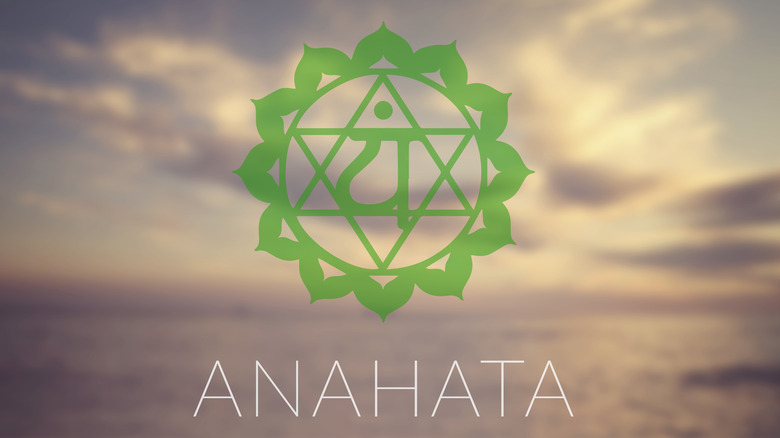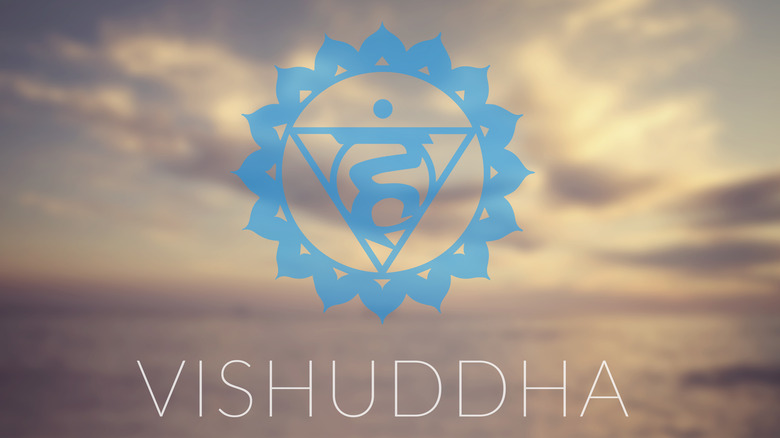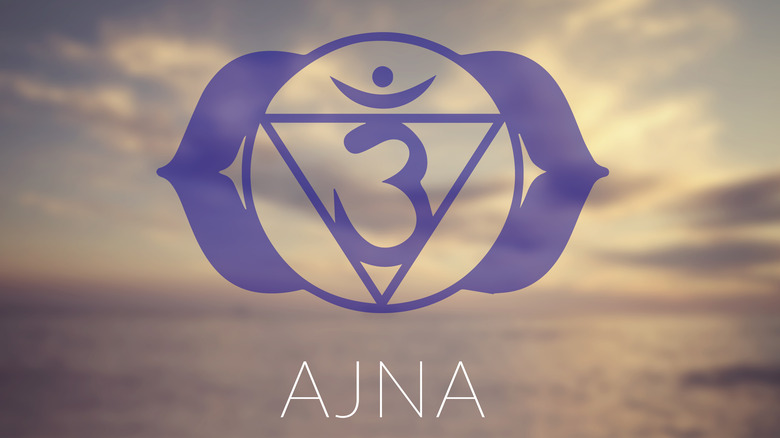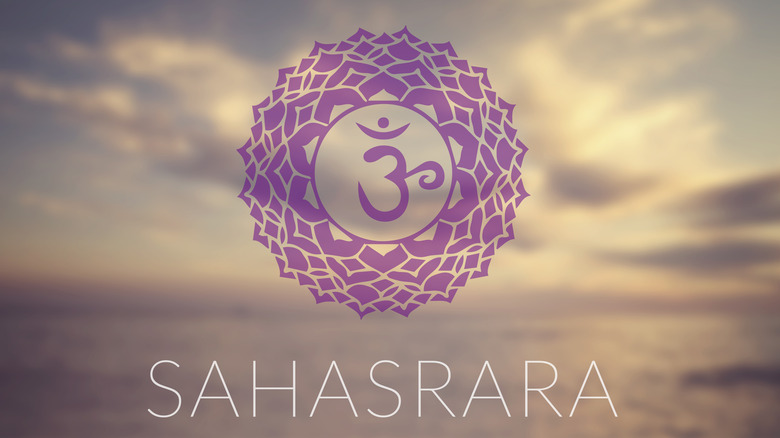Your Guide To How The 7 Major Chakras Impact Your Life
These days, it's not unusual to have an interest in the metaphysical. Formerly esoteric practices like yoga, crystal healing, and astrology have become practically mainstream, working their way into our social feeds and our own daily rituals. Among these increasingly popular spiritual concepts, you've probably come across mention of points in your body known as chakras. But what exactly are chakras, and how do they work?
Chakras have their roots in ancient Indian tradition. Meaning "wheel" in Sanskrit, they are said to be whirling centers of energy located along the length of your spine. Operating on both a physical and spiritual level, these energy points correspond to your different emotions and organs, purportedly influencing your overall well-being. To achieve sustainable health and happiness, it's believed that your chakras need to be open and aligned, allowing ideal energy flow.
Of course, no one is perfectly healthy and happy all the time. We periodically experience physical or emotional challenges — which some spiritualists take as a sign that one or more chakras are out of tune. There are various ways to cleanse your chakras, but if you're interested in adopting this practice, it's first important to understand each chakra's role and energy. So, going in the traditional order from bottom to top, here are the seven major chakras and how they're said to affect your life and well-being.
Muladhara, the root chakra
Resting at the base of your spine in the pelvic area, your root chakra, Muladhara, lays the foundation for other chakras. True to its name, this chakra is tied to many of our most basic needs, including feelings of stability, safety, purpose, and grounding. Like the roots of a tree, the root chakra keeps you steady and connected to both your inner and outer world.
As it's also associated with our ability to survive and flourish, it's important to keep this chakra open and allow energy to flow smoothly through. Emotionally speaking, proponents believe that a blocked or imbalanced root chakra can contribute to depression, anxiety, poor motivation, and an inability to focus (via Anahana Wellness). And if you believe that chakras can affect your physical well-being, look out for symptoms like pelvic pain, weight fluctuation, constipation, or incontinence, which spiritualists also link to problems with the root chakra.
There are various approaches toward restoring harmony to this first and extremely important chakra. For instance, try incorporating mantras that reaffirm your safety and stability. And because the root chakra is associated with earth and the color red, consider using this imagery in your meditation. For example, you could visualize a warm, red glow at the base of your spine, extending tendrils into the ground beneath you and repairing your connection to the planet.
The Yoga Nomads suggest that you can also enjoy foods that are associated with earth, like root vegetables, and practice yoga poses that emphasize your lower body, such as a mountain pose. To try this technique, stand straight and focus on the feeling of your feet against the ground. Put strength into your legs and core while allowing your upper body and face to relax.
Svadhisthana, the sacral chakra
Next up from the root chakra is Svadhisthana, also called the sacral chakra. This energy center sits near your lower back and is associated with desire and creation — both in the physical, sexual sense and in the artistic, inspirational sense. When the sacral chakra is balanced, it's suggested that you'll feel in tune with your emotions and impulses, from getting in the flow with creative projects to being confident and proactive in your physical affections.
Inversely, a blocked or stagnant sacral chakra can create significant obstacles in these areas. Spiritualists believe that you may experience a disconnect with your emotions, a lack of playfulness and intimacy, and artist's block (per Hello Glow). Physically, they say that you may notice issues with fertility or libido. You can also get too much of a good thing. An overstimulated sacral chakra can purportedly lead to mood swings, overreactions, and a scattered, distractible attention span.
To rein in your energy from this too-much or too-little dichotomy, you can embrace the sacral chakra's associations with sensual fragrances, the color orange, and the element of water. Try anointing yourself or your space with passionate scents like rose or jasmine. You can also wear orange-toned clothing or jewelry, or visualize the orange energy around your sacral chakra glowing warm and strong. To reconnect with water, spend quiet time at a lake, river, or ocean, or even make yourself a spiritual bath at home.
If you want to hone your sacral chakra through yoga, DailyOm suggests using the first warrior pose. Begin by positioning yourself in a lunge, with one leg forward at a right angle, and the other leg straight back. Breathe deep and lift your arms straight above your head. Exhale, lower your arms, switch your legs, and repeat.
Manipura, the solar plexus chakra
Also known as your navel chakra, the solar plexus chakra — Manipura — resides just above your belly button. This centrally located chakra is a strong well of energy, believed to be connected to your power, productivity, confidence, wisdom, bravery, and anger.
On the upside, this chakra's bold emotional associations can make it a helpful source of energy for tackling challenges or setting necessary boundaries with yourself and others. But when this chakra is out of harmony, you may feel helpless, indecisive, and prone to self-doubt (per Rocky Mountain Oils). If it is overactive, you may also go too far in the other direction, becoming aggressive, hypercritical, or judgemental. So it's important to keep this chakra in check.
Physically speaking, the solar plexus chakra is often tied to your stomach and gut. So spiritualists say that an imbalance in this chakra may manifest in digestive issues like indigestion, food sensitivities, or diabetes (via Seventh Wonder). Of course, it's important to see a doctor about serious health issues. But you can also support traditional treatment with efforts to bring your solar plexus chakra into line.
The solar plexus chakra is associated with the color yellow and the element of fire. To support its balance, try meditating while staring into a candle or holding a piece of citrine for crystal healing. Practice affirmations that bolster your confidence and self-esteem, and reconnect with this chakra's natural energies by spending time in the sun or breathing in invigorating scents like grapefruit and ginger. To strengthen the solar plexus chakra through yoga, Goodnet recommends the boat pose. Begin by laying flat on your back, then lifting both your legs and chest so that your entire body forms a V. Breathe deeply, feeling the energy at work in your core.
Anahata, the heart chakra
Anahata, your heart chakra, emits its warm energy from the center of your chest. Connected deeply with your very soul, this chakra shares a strong, pure resonance with your most fundamental emotions. When it is open and balanced, it's believed to support feelings of love, forgiveness, and compassion. But when you're contending with issues in your heart chakra, that may instead translate into negative emotions like fear, loneliness, jealousy, pain, and even hatred (via The Art of Living).
Though it is called the heart chakra, Anahata is also frequently associated with your lungs. So in the event of an imbalance, spiritualists suggest that you may experience both pulmonary and respiratory symptoms, such as poor blood pressure and circulation, heart palpitations, breathing issues, a tendency toward colds and flu, and lower immunity in general (per More Yoga).
You can pursue better balance in your heart chakra in a number of ways. To capitalize on this chakra's association with the color green, treat yourself to more green vegetables like broccoli, kale, spinach, and plenty of green herbs. And to incorporate its element of air, take time to practice deep breathing exercises to center yourself.
As for yoga poses, Balance recommends sphinx pose as an ideal technique to ease your heart chakra. Start by laying flat on your belly. Then prop up your head and torso by placing your elbows on the floor, directly beneath your shoulders. Let your shoulders relax, guiding your breath and tension down your spine and letting it dissipate into the floor.
Vishuddha, the throat chakra
We all face occasional breakdowns in communication. This is where Vishuddha comes into play. Also known as the throat chakra, this energy center rests at your neck and is closely affiliated with communication, expression, and truth — including both speech and hearing.
At its best, the throat chakra is said to empower the eloquent flow of ideas, personal authenticity, and manifestation. But at its worst, a blocked throat chakra can stifle your ability to state your needs, listen attentively, or forge meaningful connections (per Ekhart Yoga). Instead, you may find yourself biting your tongue or engaging in counterproductive chatter like gossip. And, physically, an imbalance around the throat chakra is said to cause symptoms like thyroid issues, achy muscles in your shoulders and neck, pain in your jaw or ears, hearing problems, and sore throats.
To bring your throat chakra back into its intended energy alignment, explore its association with the color blue and the element of ether, which is characterized by empty space. Give yourself room to breathe and meditate, perhaps while visualizing the blue energy of your throat chakra illuminating the void around you. When speaking, go above and beyond to express your truth in a way that is clear but compassionate, setting the path for your energy to follow. And because the speaking and listening of the throat chakra are associated with sound, trying a sound bath may be particularly helpful for clearing this chakra.
Further, Yogajala suggests that the tabletop pose may be an ideal form of yoga to rebalance your throat chakra. Position yourself on all fours, with your wrists directly beneath your shoulders and your knees directly beneath your hips. Focus on your slow inhalations and exhalations. You can also add a gentle, monotonous hum to further engage your throat.
Ajna, the third eye chakra
The metaphysical "third eye" often references a supernatural sixth sense, but this concept also has a link to the system of chakras. Ajna, also called your third eye chakra, rests within your head, aligned with the point between your eyebrows. This chakra is associated with cerebral aspects like intuition, imagination, spiritual perception, and clarity of thought.
"While the physical eyes perceive the physical world, the third eye sees the true world — a unified whole with an unyielding connection to spirit," spiritualism author Candice Covington tells Healthline. "The illusion of separation between self and spirit dissolves when the third eye connection is cultivated."
Essentially, this dreamy chakra will help you find truth and connection in both your inward and outward experience of reality. So when your third eye chakra is open and balanced, proponents believe you will feel in tune with the universe around you, traversing everyday events with insight, ease, and effectiveness. However, a misaligned third eye chakra is said to cause stress, anxiety, indecision, and close-mindedness. On top of that, spiritualists suggest that problems with your third eye chakra could contribute to physical ailments like headaches, ear or eye issues, and insomnia (per Tiny Rituals).
For improved clarity, rebalancing your third eye chakra may help. This chakra is represented by vibrant indigo and the element of light, which illuminates our perception. Envision the path before you aglow with positivity, lighting your way forward. You can also focus your intuitive energy with the crystal celestite, whether you prefer to place it on your altar, wear celestite jewelry, or meditate with a piece of this stone placed directly over your third eye. As for yoga poses, YouAligned suggests candle gazing in a straight, comfortable posture to center your spiritual perception.
Sahasrara, the crown chakra
Last but not least, we come to the seventh chakra, Sahasrara. Also known as the crown chakra, this spinning energy center is the culmination of our journey into heightened consciousness, representing epiphany, awareness, understanding, enlightenment, and communion with the next spiritual plane. Proponents believe that this chakra offers you the tools to surpass your perceived limitations and experience the bliss of universal connection, using its energy as a gateway to the infinite (per Chakras.info).
All that said, blockages of the crown chakra are thought to manifest as cynicism, apathy, short-sightedness, and preoccupation with materialism or petty concerns. Physically, it is also suggested that trouble with your crown chakra could leave you feeling heavy, exhausted, and prone to pressure headaches (via Wave Meditation).
The crown chakra is associated with two colors, purple and white, as well as the intangible element of thought. Because your crown chakra is the pinnacle of intellect and your metaphysical awareness, practices like meditation, visualization, and spiritual centering will play a critical role in resolving any issues. And in line with this chakra's colors, it's thought that the healing powers of violet amethyst and milky selenite can also be used as energetic focuses.
Kellee Maize recommends the headstand as a yoga pose to unblock your crown chakra, but this isn't always a great choice for beginner or intermediate practitioners. For something a little more accessible, you can also use the rabbit stand pose. Kneel down with your toes against the floor, as if you were about to take off running. Then lean forward until the top of your head is lightly touching the ground. Finally, reach back to hold the heels of your feet in your palms and take slow, deep breaths while your crown chakra reconnects with the earth beneath you.
